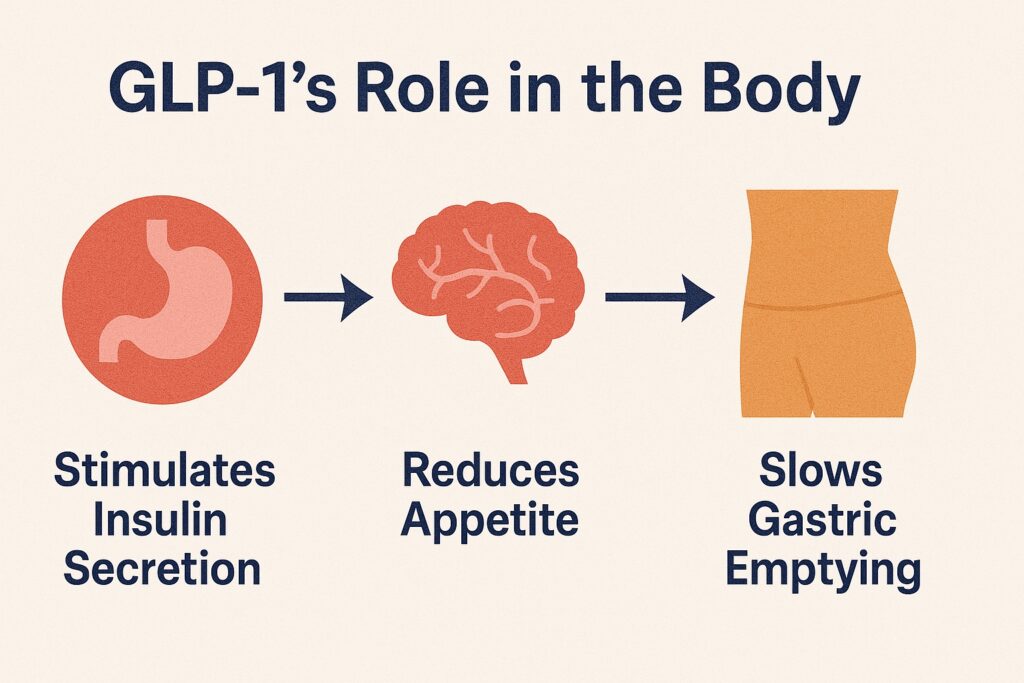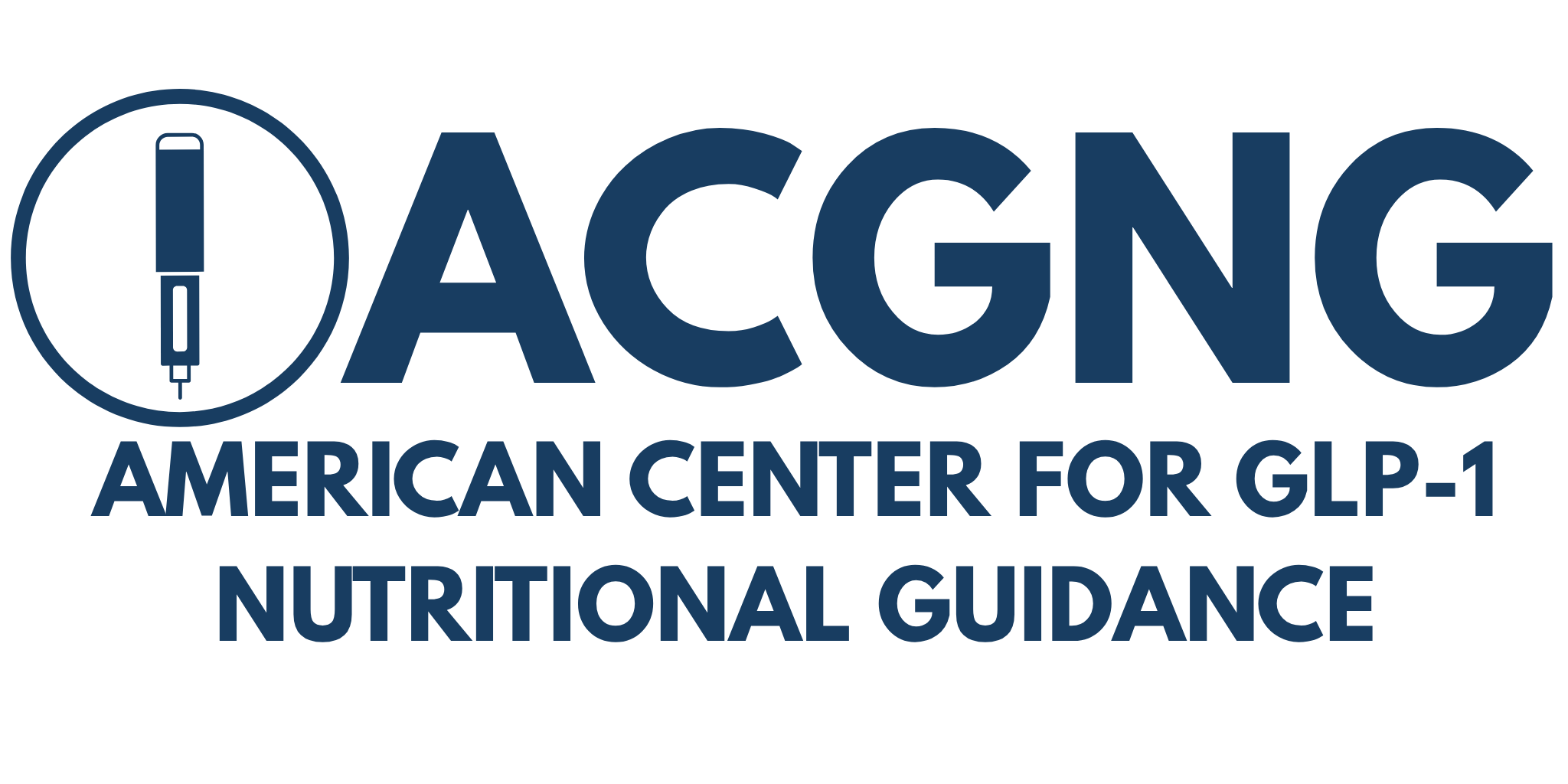Table of Contents
- Overview
- What Does GLP-1 Do?
- Where Does GLP-1 Come From?
- GLP-1 and Medical Therapies
- Scientific Background & References
Overview
GLP-1, or glucagon-like peptide-1, is a hormone produced in the gut that helps regulate blood sugar levels, slow gastric emptying, and reduce appetite. It is part of a group of hormones called incretins that are released in response to food intake.
GLP-1 has gained attention due to its role in diabetes and obesity management. By enhancing the body’s insulin response and promoting satiety, it helps people eat less and maintain better glycemic control.
What Does GLP-1 Do?
- Stimulates insulin secretion: When blood sugar levels rise, GLP-1 encourages the pancreas to release insulin.
- Suppresses glucagon: GLP-1 inhibits the release of glucagon, a hormone that raises blood sugar.
- Slows gastric emptying: It delays how quickly food leaves the stomach, helping people feel full longer.
- Reduces appetite: GLP-1 acts on receptors in the brain to reduce hunger and food intake.

Where Does GLP-1 Come From?
GLP-1 is secreted by intestinal L-cells, which are located in the lining of the small intestine. The hormone is released after eating, especially in response to carbohydrates and fats.
However, GLP-1 is rapidly broken down by an enzyme called DPP-4 (dipeptidyl peptidase-4), which limits its natural effectiveness—this is why medical GLP-1 receptor agonists are engineered to last longer in the body.
GLP-1 and Medical Therapies
Several medications now mimic or enhance the effects of natural GLP-1. These are called GLP-1 receptor agonists and are used to manage type 2 diabetes and promote weight loss. Popular examples include:
- Semaglutide (Ozempic, Wegovy, Rybelsus)
- Liraglutide (Victoza, Saxenda)
- Dulaglutide (Trulicity)
- Exenatide (Byetta, Bydureon)
- Lixisenatide (Adlyxin)
These medications work by activating the same receptors as natural GLP-1 but with longer-lasting effects. They are typically administered via injection (except for Rybelsus, which is oral).
Scientific Background & References
- Nauck MA, Meier JJ. “Incretin hormones: Their role in health and disease.” Diabetes Obes Metab. 2018;20(Suppl 1):5-21.
- Drucker DJ. “The biology of incretin hormones.” Cell Metab. 2006;3(3):153–165.
- American Diabetes Association. “Pharmacologic Approaches to Glycemic Treatment.” Diabetes Care. 2024;47(Suppl 1):S125–S143.
- U.S. FDA. Drug Safety Communications on GLP-1 receptor agonists. 2024.
This article is part of the GLP-1 Basics series by the American Center for GLP-1 Nutritional Guidance (ACGNG). All information is for educational purposes and not intended as medical advice.
